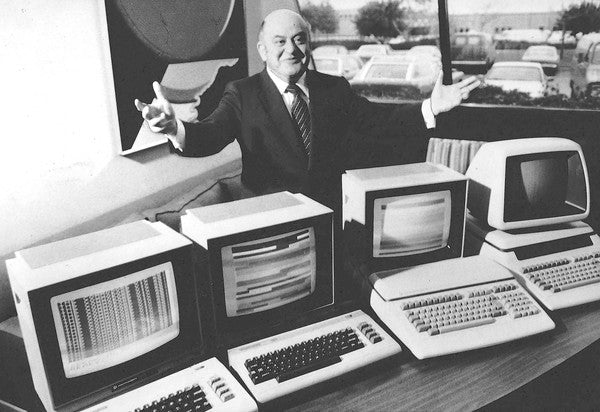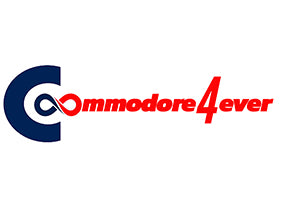
The Story of Commodore: Rare Facts, Forgotten History, and Intriguing Rumors
Share
For many, Commodore is synonymous with the legendary Commodore 64, the best-selling computer of all time. But the company’s history is far richer—and stranger—than most people realize. From its unexpected beginnings to its spectacular downfall, Commodore left a legacy filled with innovation, controversy, and even some mystery. Let’s take a trip through the lesser-known corners of Commodore’s history, from its origins to its modern-day cult following.
The Unexpected Beginning: Commodore Wasn't Always About Computers
Before it was a computer company, Commodore was in the typewriter and calculator business—and before that, it was a Canadian typewriter repair company founded by Jack Tramiel in 1954. Yes, you read that right. Commodore Business Machines (CBM) started in Toronto, fixing office equipment. Tramiel, a Holocaust survivor and a former U.S. Army technician, later moved the company into typewriters and eventually electronic calculators.
However, in the early 1970s, Commodore’s calculator business was under threat when Texas Instruments (TI), one of its main suppliers, decided to manufacture its own calculators and sell them at a fraction of the price. In an act of survival (and revenge), Tramiel decided to pivot to personal computers—an industry still in its infancy.
The PET Prototype Almost Got Commodore Sued
Commodore’s first real computer, the PET 2001, was released in 1977 as a direct competitor to the Apple II and Tandy TRS-80. But what many don’t know is that the original PET prototype was built using parts from a Texas Instruments calculator—ironically, the very company that had nearly put Commodore out of business! This wasn’t just poetic justice; it was a bold and risky move.
Even wilder, Commodore nearly got sued by Hewlett-Packard because the PET 2001’s original square screen design resembled HP’s high-end scientific calculators. To avoid legal trouble, Commodore quickly changed the design before mass production.
The C64 Was So Popular, It Crashed the Market
The Commodore 64, launched in 1982, is widely known as the best-selling computer in history, with estimates of between 12 and 17 million units sold. But here’s the crazy part: it was so affordable and so successful that it helped destroy the home computer market.
At just $595 at launch (and even cheaper later on), the C64 was half the price of many competitors, yet far more powerful. Commodore aggressively slashed prices, making it impossible for many rival companies to compete. By 1984, Commodore had run several competitors out of business, including Texas Instruments, which ironically had once been its biggest rival in calculators.
However, this aggressive pricing strategy came at a cost. While the C64 dominated, it also caused an industry-wide price war that led to a crash in home computer sales. Many companies, including Commodore itself, struggled to remain profitable in the long run.
The Amiga: The Computer That Was Almost an Atari
One of the wildest twists in Commodore history is the story of the Amiga. The Amiga wasn’t originally a Commodore product at all. It was developed by a small independent company called Amiga Corporation, which was in desperate need of funding to complete the project.
Atari, led by Jack Tramiel’s old rival Nolan Bushnell, originally struck a deal with Amiga to provide funding. However, Commodore swooped in at the last minute and outbid Atari, buying Amiga outright in 1984. This led to a bitter rivalry between Atari and Commodore, with lawsuits and corporate drama that lasted for years.
The Amiga 1000, released in 1985, was revolutionary, featuring true multitasking, advanced graphics, and digital sound that blew away everything else on the market. Unfortunately, poor marketing and internal chaos at Commodore meant the Amiga never reached its full potential.
The Strange Fate of Jack Tramiel
Jack Tramiel, the founder and driving force behind Commodore, was forced out of his own company in 1984 due to conflicts with the board of directors. But he didn’t disappear—he took over Atari instead. Yes, the same Atari that Commodore had just outmaneuvered for the Amiga.
Under Tramiel’s leadership, Atari attempted to take revenge on Commodore with the Atari ST, which was designed to compete directly with the Amiga. This set the stage for one of the fiercest battles in computer history. Both machines had their loyalists, and even today, the Amiga vs. Atari ST debate still rages on among retro computing fans.
The Mysterious Commodore 65: The Computer That Never Was
One of the most fascinating "what if" stories in Commodore history is the Commodore 65. Designed in the late 1980s as a potential successor to the C64, the Commodore 65 was meant to be a hybrid between an 8-bit and 16-bit machine, offering backward compatibility with the C64 while adding more power.
However, before it could be released, Commodore went bankrupt in 1994, and the project was scrapped. Only a handful of prototype C65 units exist today, making them one of the rarest and most expensive collector’s items in retro computing. Some units have sold for over $20,000 at auction!
Commodore Today: A Cult Following That Won’t Die
Even though Commodore as a company no longer exists, its computers continue to thrive in the hands of enthusiasts. The Amiga community is still alive, with developers creating new software, hardware, and even entire operating system updates for machines that are nearly 40 years old.
Meanwhile, the C64 remains a favorite for retro gamers, homebrew programmers, and tinkerers. Modern C64 clones and remakes, like the C64 Mini and the Mega65 (a modern recreation of the Commodore 65), prove that there’s still demand for these machines.
Even more surprising, some businesses and governments were still using Commodore machines well into the 2000s, especially for tasks like industrial automation.
Final Thoughts
The story of Commodore is one of brilliant innovation, corporate drama, and unrealized potential. From its origins in typewriters to the Amiga’s cutting-edge capabilities, Commodore left a permanent mark on the world of computing. And while the company may be gone, its legacy lives on in the passionate retro computing community that refuses to let these machines fade into obscurity.
So whether you’re a C64 gamer, an Amiga enthusiast, or just someone who appreciates tech history, Commodore is 4ever.
